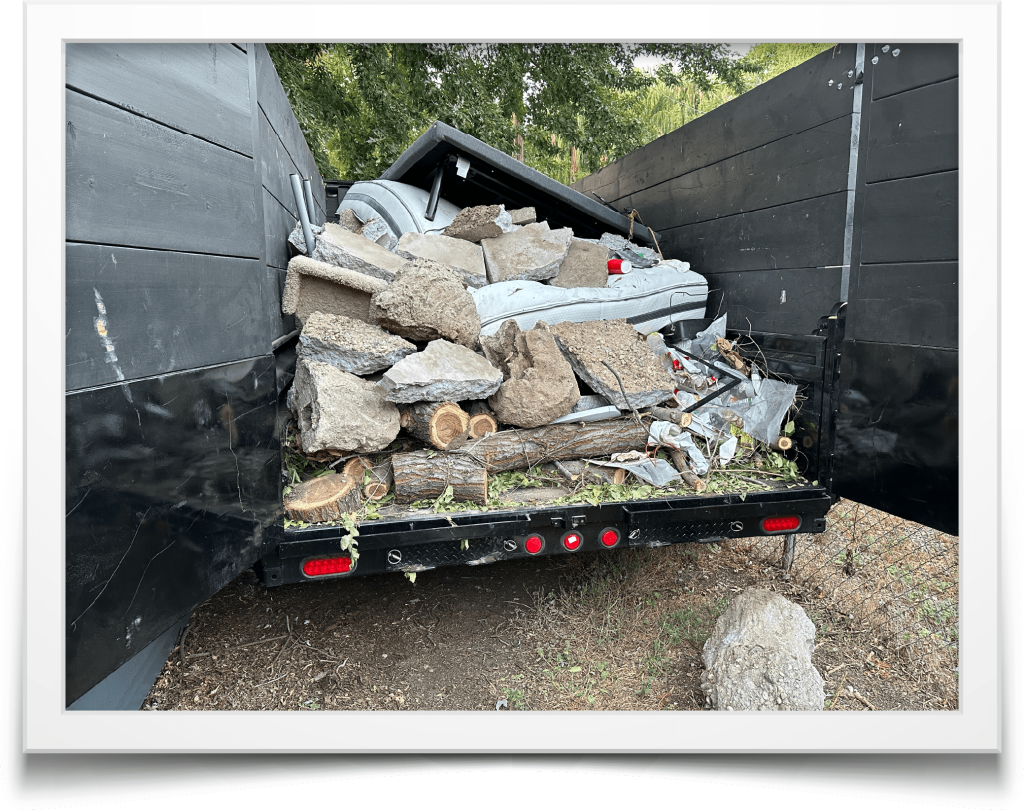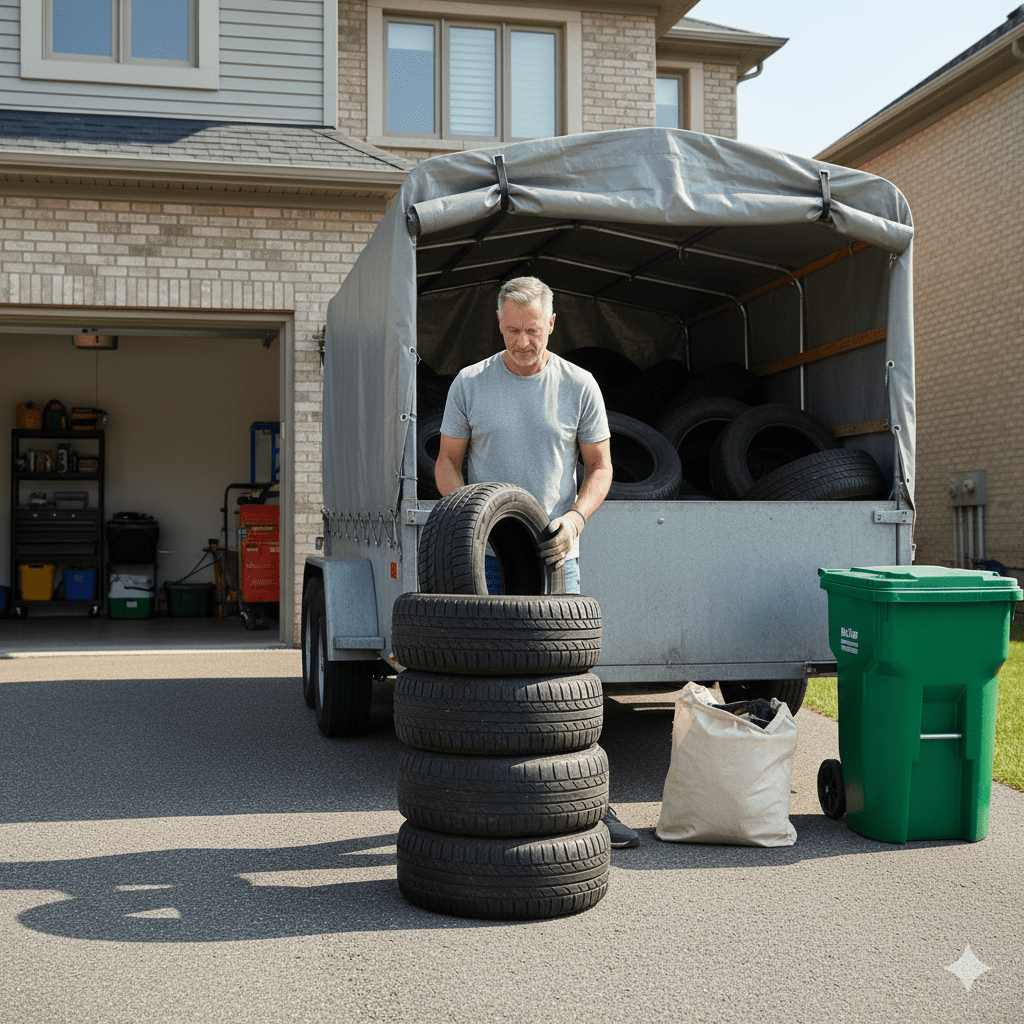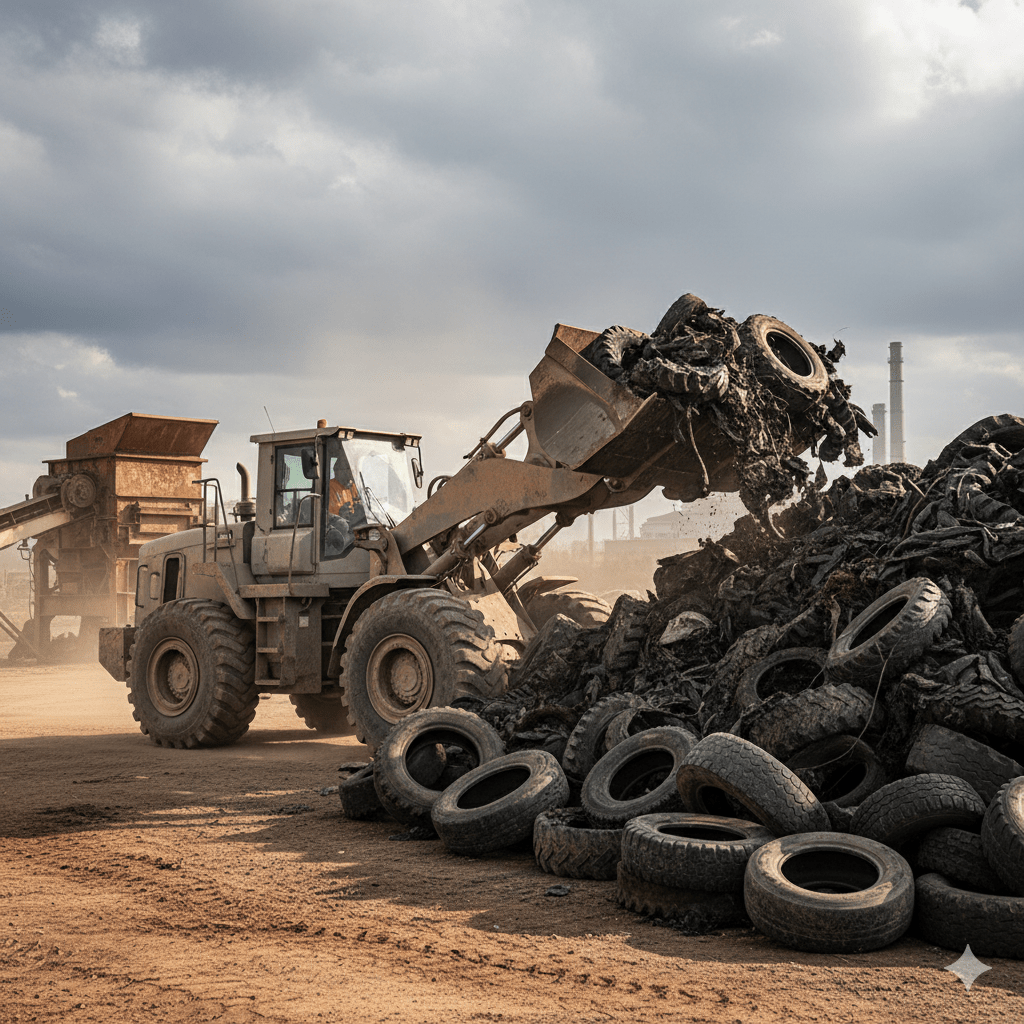Concrete doesn’t care about your weekend plans. It sits there like a smug monument to “permanent,” daring you to bring a sledge and optimism. Preparation is the difference between a clean, fast removal and a noisy, dusty saga that ends with a busted sprinkler, a cranky neighbor, and a bill that reads like a confession. Plan the work. Stage the exit. Then make the slab vanish like you meant it.
Assessing the Scope of Work and Requirements
Start with facts, not vibes. Guessing turns into change orders with a bad attitude.
- Measure the slab: square footage and real thickness (check an exposed edge or core a discreet spot). A 4″ myth that turns out to be 7″ reality will eat your schedule and your budget.
- Find the steel: wire mesh, rebar, fibers—each changes the method and the pace. Rust stains at cracks = steel below. Plan for cutting, not wishing.
- Read the site: access gate width, eave height, slopes, soft lawn, pavers, tight corners, and where a trailer can park without blocking your neighbor’s Great American Exit.
- Utilities and surprises: power, gas, water, irrigation, conduit in the slab, mystery footings, or an old fence post entombed where hopes go to die. Confirm, don’t assume.
- Subgrade and drainage: clay grabs chunks; gravel gives them up. Standing water predicts mud Olympics.
- Staging and egress: where broken sections land, where you stack, and how they travel to the truck. A straight shot is money saved.
- Finish condition: haul-and-go, magnet sweep, rough grade, backfill—define the “done” you expect before anyone lifts a hammer.
If you bring in pros, the best concrete removal services treat this pregame like ritual: thickness verified, reinforcement mapped, access engineered, and an exit route that doesn’t invent new problems.
Understanding Local Regulations and Permits
Rules exist. You can follow them now or meet them later—when they arrive with fines.
- Demo permits: some jurisdictions require one for outbuildings or slabs, others only if utilities are involved or you’re touching the right-of-way. Ask a human, not a forum.
- Right-of-way and dumpster permits: street placement often needs city blessing, cones, and reflective tape.
- Work hours & noise: start times, quiet hours, weekend restrictions—your HOA did not write those covenants as a joke.
- Silica and runoff: wet cutting, dust control, and slurry containment aren’t “nice to haves”—they’re how you avoid citations and lungs that hate you.
- Utility locates: do the call. Every country has a version of “call before you dig.” “We think it’s dead” is not a policy.
- Proof-on-site: permit posted, MSDS for chemicals if you’re using expansive grout, and a clear plan for where every pound of debris is going.
Pros who value their licenses will include permitting responsibilities in the contract and bring dust/slurry controls that make inspectors smile instead of write.

Budgeting for Unexpected Challenges
Your plan should survive contact with reality. That means padding for the stuff you can’t see yet.
- Contingency: add 10–20% to both cost and time. Nobody cries over a budget you didn’t need; everyone cries over the one you did.
- Thickness & steel drift: an “average” hides edges, footings, and weird patch jobs. More inches + more metal = more cutting, more loads, more money.
- Access friction: narrow gates, soft lawns, rain delays, full recycling yards at 3:55 PM. Logistics taxes are real.
- Weight variance: wet concrete weighs heavier at the scale; mixed loads cost more than clean.
- Discovery items: embedded conduit, unexpected rebar density, or a slab bonded to a wall like it’s in a long-term relationship.
Write change-order triggers into the agreement: what events count, who decides, how pricing shifts, and when work pauses. Adults plan the “what if” before the first cut.
Protecting Surrounding Structures and Landscaping
Demolition without protection is just vandalism in a hard hat.
- Surface protection: plywood or composite mats over turf, ram board on pavers, corner guards on door jambs, blankets on glass and garage rails.
- Dust discipline: water-fed saws, misters, respirators, and HEPA vacs. Dry-cut cowboys aren’t impressive; they’re expensive later.
- Sprinklers and roots: flag heads, cap open lines, avoid compaction in root zones. A tree is slower to forgive than a neighbor.
- Nail and shard control: stage debris on tarps, sweep with a magnetic roller, and police the haul path so your tires don’t fund a new set.
- Containment: set up a single traffic lane, mark it, and keep it sacred. Chaos multiplies steps and trip hazards.
- Neighbors and pets: notice on timing, barricades for kids and dogs, and no staging on someone else’s runway.
Watch how the best concrete removal services arrive: mats down first, path taped, dust plan on deck. If the setup looks slow, that’s the speed of not breaking things you like.
Coordinating with Other Renovation Projects
Concrete removal is usually Act I, not the whole play. Orchestrate the handoffs.
- Sequence with purpose: demo → utilities verified/capped → subgrade prep → inspections (if any) → new work. Don’t book pavers for the same afternoon you’re hauling the last load.
- Lead times and windows: recycling yards close early; inspectors do too. Leave room on the calendar so one late truck doesn’t push the pour a week.
- Access for the next crew: preserve the path they’ll need. Don’t bury your own future under a mountain of “we’ll move it later.”
- Weather logic: the slab might break in the rain; the subgrade won’t compact right after. Protect the base if the next trade needs dry ground.
- Communication loop: share the plan with GC, subs, and whoever actually holds the shovel. A schedule nobody reads is a wish list.
Steal this simple cadence and you’ll sleep at night:
- T–10 to –7 days: confirm permits, utility locates, dumpster/recycler booking, and neighbor/HOA notices.
- T–3 days: stage protection materials, verify equipment, walk the egress path, mark sprinklers.
- Demo day: permit posted, dust/water controls live, photos before/during/after, dump tickets saved.
- T+1 day: nail sweep, rough grade/backfill, verify elevations, handoff to next trade with a clean site and real measurements.
Bottom line
Preparation turns concrete removal from a brawl into a sequence. Scope it with numbers, not hope. Respect the paperwork before it respects you. Budget for the curveballs you can’t see yet. Protect everything you want to keep. Coordinate like you’re the only adult in the room—because sometimes you are. And if the slab turns out thicker, angrier, or more wired than promised, hand it to specialists who live for this—the best concrete removal services plan their way out of problems you’ll never have to meet.






